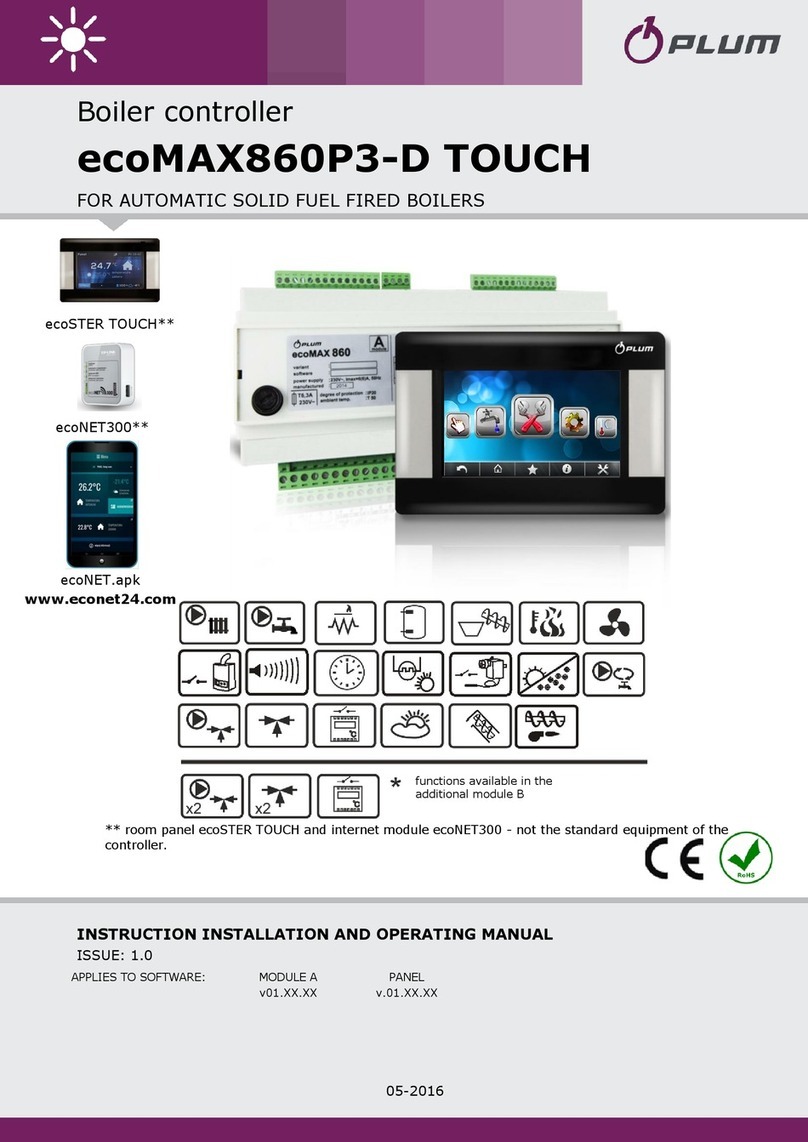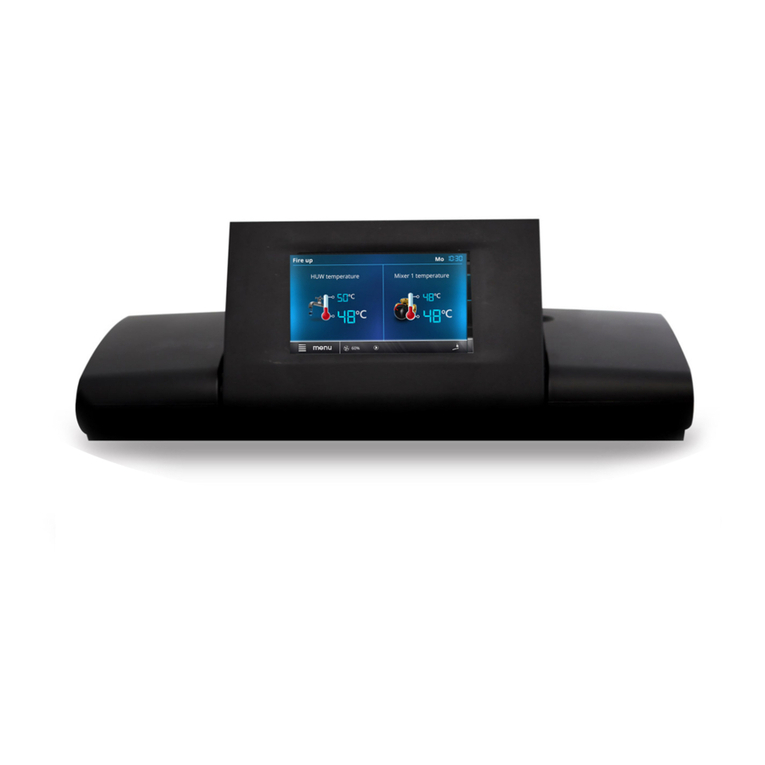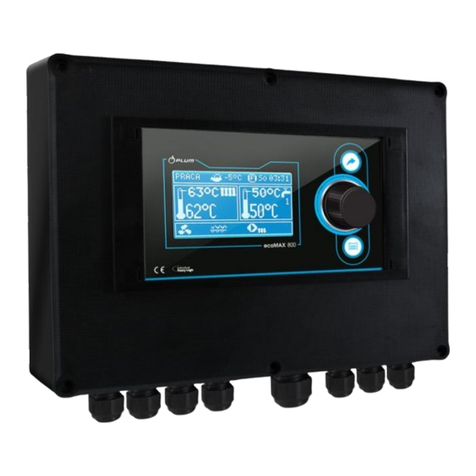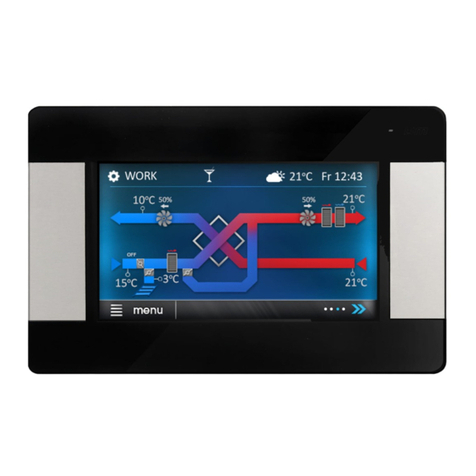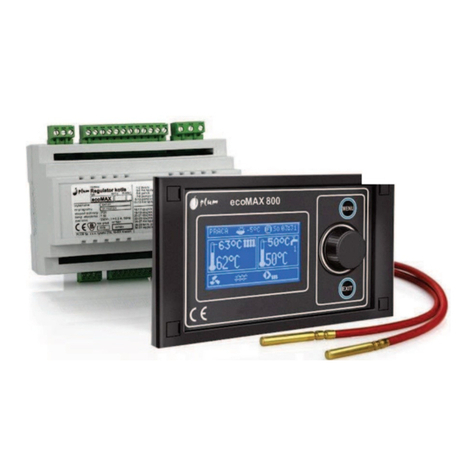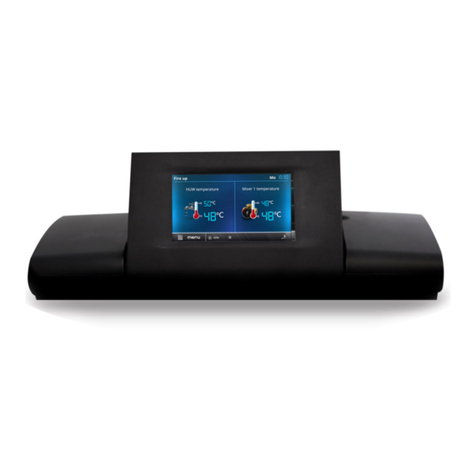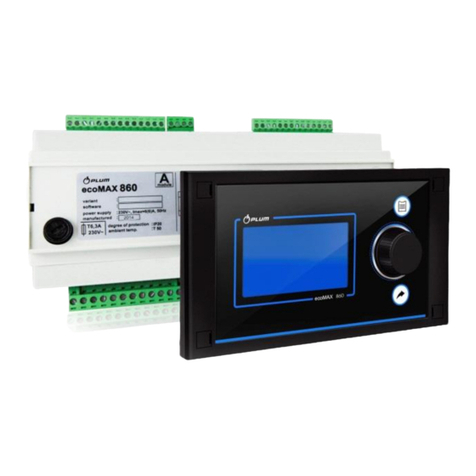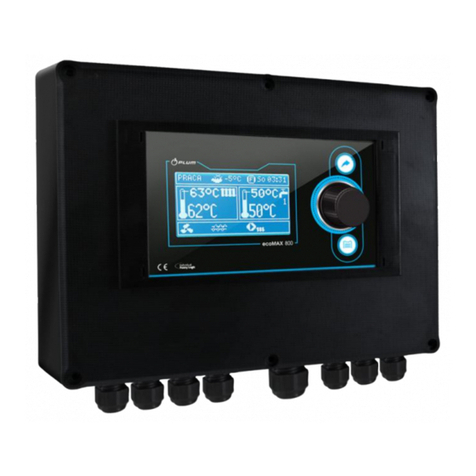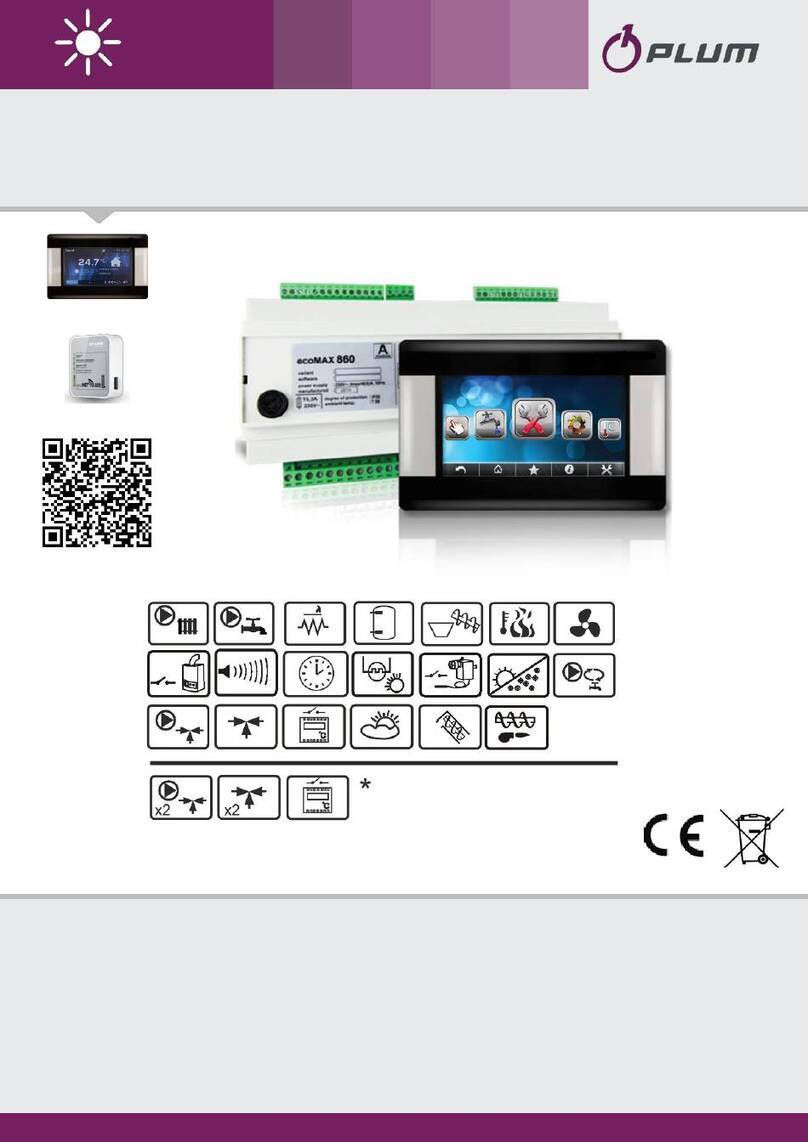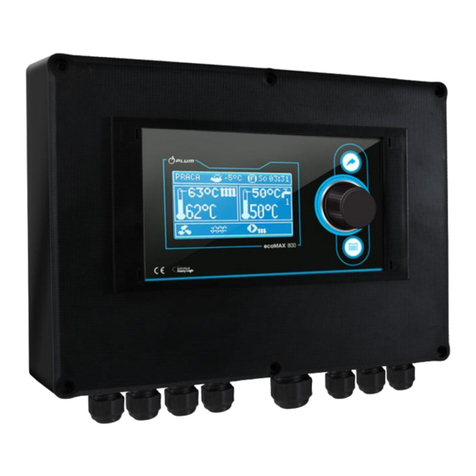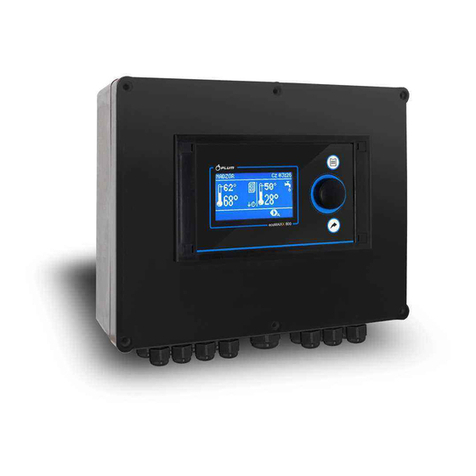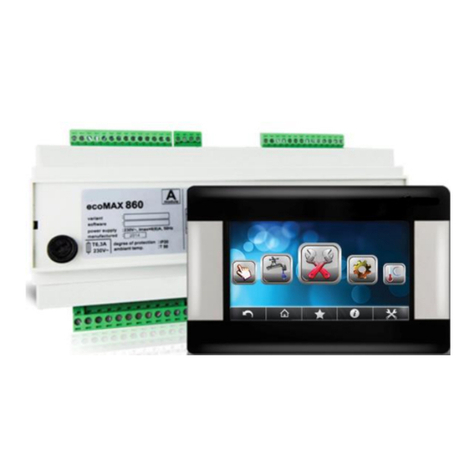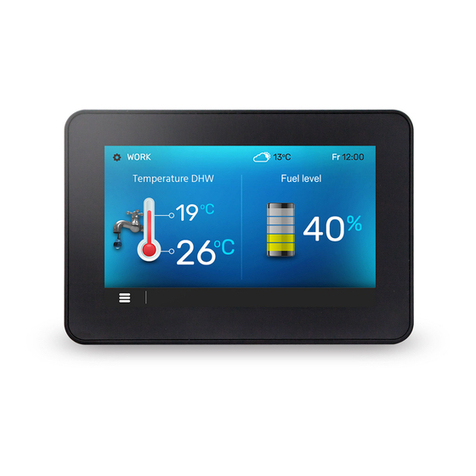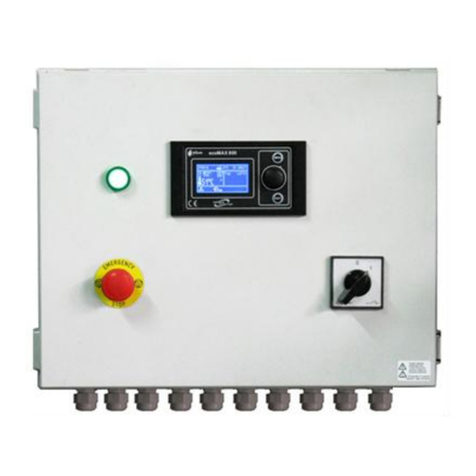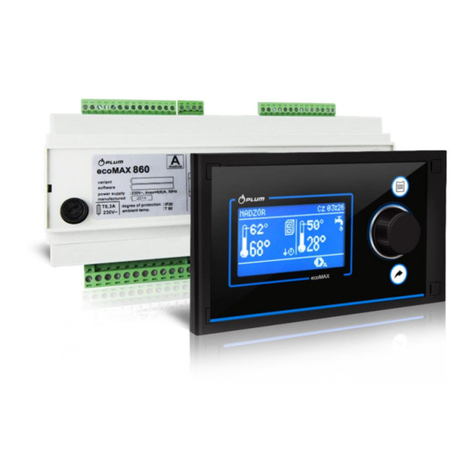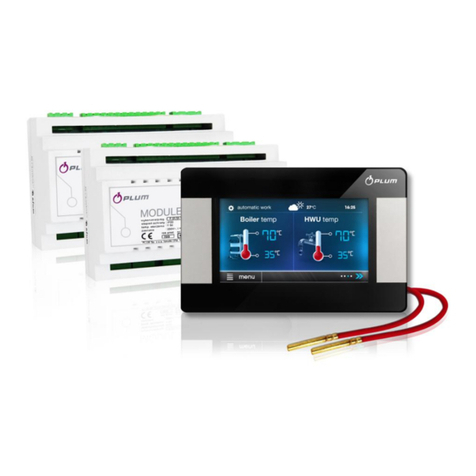
3
TABLE OF CONTENTS
1RECOMMENDATIONS REGARDING SAFETY ........ 4
2GENERAL INFORMATION .................................... 5
3INFORMATION ABOUT DOCUMENTATION......... 5
4STORAGE OF DOCUMENTATION......................... 5
5APPLIED SYMBOLS .............................................. 5
6DIRECTIVE WEEE 2012/19/EU............................. 5
USER SETTINGS ............................................ 7
7USER MENU - STRUCTURE .................................. 8
8CONTROLLER OPERATION................................... 9
8.1 DESCRIPTION OF THE MAIN WINDOW....................... 9
8.1 SWITCHING THE BOILER ON AND OFF...................... 10
8.2 PRESET TEMPERATURE SETTING ............................ 10
8.3 FIRE UP MODE................................................. 10
8.5 STABILIZATION MODE ..................................... 10
8.6 OPERATION MODE .......................................... 11
8.7 REGULATION MODES .......................................... 11
8.8 SUPERVISION MODE ....................................... 11
8.9 BURNING OUT/BURNING OFF MODE.............. 12
8.10 STOP MODE..................................................... 12
8.11 GRATE MODE/CLEANING ................................ 12
8.12 HUW SETTINGS................................................. 13
8.13 HUW PRESET TEMPERATURE SETTING.................... 13
8.14 HYSTERESIS OF HUW CONTAINER......................... 13
8.15 ACTIVATION OF THE SUMMER FUNCTION ............. 13
8.16 HUW CONTAINER DISINFECTION........................... 13
8.17 MIXER CIRCUIT SETTINGS..................................... 13
8.18 WEATHER CONTROL ........................................... 14
8.19 NIGHT DECREASE SETTINGS .................................. 15
8.20 CIRCULATION PUMP CONTROL .............................. 15
8.21 FUEL LEVEL CONFIGURATION ................................ 15
8.22 INFORMATION................................................... 16
8.23 MANUAL CONTROL ............................................ 16
8.24 MENU FAVORITES .............................................. 16
8.25 COOPERATION WITH ROOM THERMOSTAT AND ROOM
PANEL.............................................................. 16
8.26 COOPERATION WITH INTERNET MODULE................. 17
INSTALLATION AND SERVICE SETTINGS....... 19
9HYDRAULIC SCHEMES ....................................... 20
10 TECHNICAL DATA .............................................. 23
11 STORAGE AND TRANSPORT CONDITIONS......... 23
12 CONTROLLER INSTALLATION ............................ 23
12.1 ENVIRONMENTAL CONDITIONS ............................. 23
12.2 INSTALLATION REQUIREMENTS.............................. 23
12.3 MODULE INSTALLATION ...................................... 23
12.4 IP PROTECTION LEVEL ......................................... 24
12.5 ELECTRIC CONNECTION........................................ 24
12.6 ELECTRIC SCHEME .............................................. 26
12.7 CONNECTION OF TEMPERATURE SENSORS ............... 28
12.8 CONNECTING THE WEATHER TEMP.SENSOR ............ 28
12.9 CONNECTING THE EXHAUST TEMPERATURE SENSOR .. 28
12.10 TEMPERATURE SENSORS CHECKING........................ 29
12.11 OPTICAL SENSOR CONNECTION ............................. 29
12.12 MIXERS ROOM THERMOSTAT CONNECTION ............. 29
12.13 BOILER ROOM THERMOSTAT CONNECTION .............. 30
12.14 CONNECTING AUXILIARY BOILER.............................30
12.15 ALARMS SIGNALING CONNECTION..........................31
12.16 MIXER SERVOMOTOR CONNECTION........................31
12.17 CIRCULATION PUMP CONNECTION..........................32
12.18 CONNECTING STB TEMPERATURE LIMITER...............32
12.19 CONNECTING ROOM PANEL ..................................32
12.20 WIRELESS ROOM PANEL CONNECTION ....................33
13 SERVICE MENU - STRUCTURE............................34
14 DESCRIPTION OF SERVICE PARAMETERS...........36
14.1 BURNER ...........................................................36
14.2 BOILER .............................................................37
14.3 CH AND HUW ..................................................38
14.4 BUFFER ............................................................39
14.5 MIXER..............................................................39
14.6 OTHER PARAMETERS...........................................40
15 ALARMS DESCRIPTION ......................................41
15.1 MAXIMUM BOILER TEMPERATURE EXCEEDED ...........41
15.2 MAXIMUM FEEDER TEMPERATURE EXCEEDED...........41
15.3 BOILER TEMPERATURE SENSOR DAMAGE .................41
15.4 EXHAUST TEMPERATURE SENSOR DAMAGE ..............41
15.5 FEEDER TEMPERATURE SENSOR DAMAGE.................41
15.6 FAN DAMAGED ..................................................41
15.7 NO COMMUNICATION .........................................42
15.8 NO SUPPLY........................................................42
15.9 UNSUCCESSFUL BOILER FIRING-UP ATTEMPT ............42
16 FIRMWARE UPDATE ..........................................42
17 OTHER CONTROLLER FUNCTIONS .....................42
17.1 POWER FAILURE.................................................42
17.2 ANTI-FREEZE PROTECTION....................................42
17.3 PUMPS STANDSTILL PROTECTION FUNCTION.............42
18 LAMBDA PROBE.................................................42
19 REPLACEMENT OF PARTS AND COMPONENTS .43
19.1 REPLACEMENT OF CONTROL PANEL ........................43
19.2 REPLACEMENT OF MODULE CONTROLLER.................43
19.3 MAINS FUSE REPLACEMENT ..................................43
20 DESCRIPTION OF POSSIBLE MALFUNCTIONS ....44
